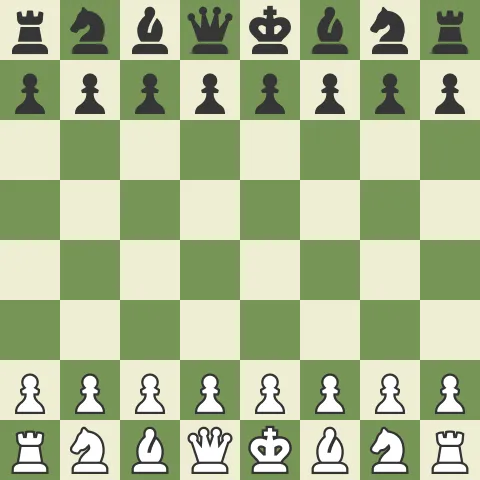The End of the Game
Capturing
It is often said that “Chess is a game of capture.” When people say that, they are referring to being able to capture, or take, your opponent’s pieces. In the example, the arrows show you how various pieces can make captures. All chess pieces capture exactly the same way that they move except the pawn. The pawn can only capture 1-square diagonally in front of themselves as demonstrated earlier.
There is one important note about capturing with Knights. Knights capture by landing on pieces, not jumping over pieces. Any pieces a Knight jumps over are safe from that Knight.
Piece Values
It should be noted that each chess piece has a value. Therefore, capturing just any piece, at any time, with any piece is not wise. Remember these values so you know when to avoid making an unfavorable trade and when to make favorable trades:
Pawn - 1 Point
Knight - 3 Points
Bishop - 3 Points
Rook - 5 Points
Queen - 9 Points
King - The Game
While the King cannot actually be captured, if he is checkmated you lose the game. It should also be noted that these values do not determine who wins the game. If you capture 20 points total and your opponent captures 10 points but checkmate you, they win even though they captured less points.
The points, which is called “Relative Piece Value,” is just a guide that helps you know approximately how strong your army is against your opponent’s. Larger armies usually win in chess; however, there are millions of examples where armies with less pieces still win.
Check
When a King can be seen by an enemy piece, he is considered to be in “Check.” A King is not allowed to stay in check. Therefore, when you are in check you must get out of check. In the example, the Black Rook can see the White King. The arrows show where the White King can move to get out of check.
The green square is important, however. Since you cannot leave your King in check, white cannot move their King where Black’s King could see him. Otherwise, they would both be in check. This is not allowed.
There are 3 ways out of check. Run away with your king, Capture the checking piece, or block the checking piece with a piece of your own.
Checkmate
However, the goal of chess is not just to check your opponent’s King but to checkmate their King. Checkmate means a King is in check and there is no possible way out of check. In the example, you can see the Black King is trapped in the corner. The White Queen and White Rook are looking at every square the Black King could move to and the Rook is also looking directly at the Black King, putting him in check. This is an example of checkmate. To checkmate your opponent, you must make sure the King is in check and cannot escape check.
Stalemate
Stalemate is when it is your turn and you cannot make any moves without breaking a rule. As you can see, the Queen traps the King in the corner; however, it is black’s turn to move and black has no legal moves.
It is important to know that stalemate does not just involve the King. If it is your turn and NONE OF YOUR PIECES can move, it is stalemate.

